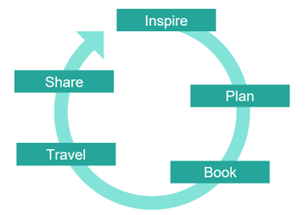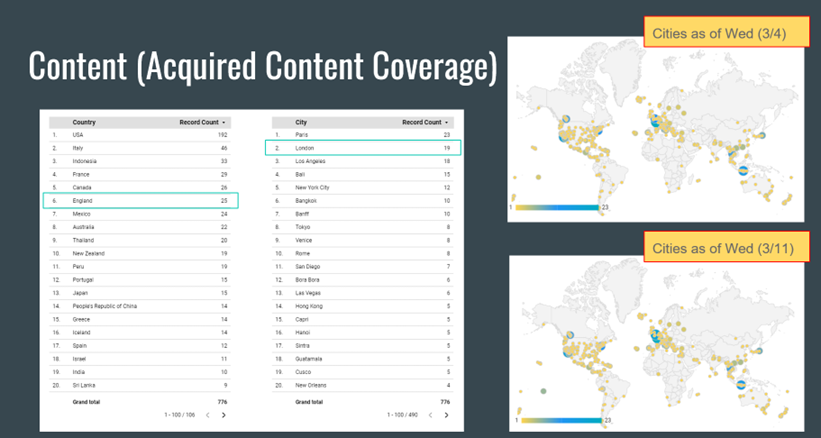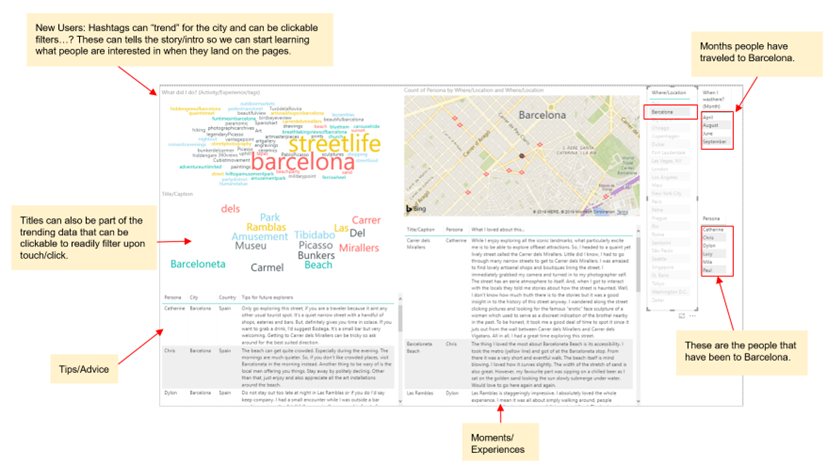RevOps Before It Had a Name: Launching Triptalker’s GTM Ops Engine

Project Snapshot
- Company: Triptalker
- Stage: Pre-launch beta
- Timeframe: 2018 to 2020
- Role: Head of Marketing & Ops (de facto RevOps lead)
- Scope: Lifecycle design, onboarding workflows, analytics/reporting, campaign architecture, martech coordination
- Tools Used: Appcues, GA, Hotjar, Power BI, Google Data Studio, Usertesting.com, HubSpot, Mautic, CRM
Mapped the full customer journey into five core stages: Inspire > Plan > Book > Travel > Share.
Situation
Triptalker was a pre-revenue, socially-driven travel startup designed to inspire and connect travelers through user-generated content (UGC). The goal was to build a global community, use that content to power AI-driven trip planning, and eventually support seamless booking. The company was moving toward beta launch with shared resources and no dedicated RevOps or lifecycle team in place.
Challenge
With shared product, dev, and design resources also supporting other initiatives, there was no centralized function driving cross-functional alignment, tooling setup, or behavioral strategy. As the launch approached, the team needed:
- A unified lifecycle and engagement framework
- Systems to track onboarding, content creation, and creator health
- Tooling integrations that captured and activated behavioral data
- Campaign reporting and optimization across initiatives
Approach
Built the Lifecycle Framework
Mapped the full customer journey into five core stages: Inspire > Plan > Book > Travel > Share. This became the foundation for all user flows, messaging, and data collection logic.

Lifecycle journey mapped across five core stages — Inspire, Plan, Book, Travel, Share — to guide onboarding and behavioral tagging.
Operationalized Onboarding
Used Appcues to implement checklist-driven onboarding and track completion events tied to user behaviors (“register for the promotion,” “post a moment”). Exported and reviewed event data regularly to spot dropoff trends and performance gaps.
Centralized Behavioral Data
Connected user activity (such as moment count, trip interest, hashtag and category engagement) with user IDs via analytics tools. Created dashboards in Power BI and Google Data Studio to visualize:
- UGC coverage by geography
- Engagement depth by persona
- Top-tagged destinations and content types

Google Data Studio dashboard showing content density week over week.

PowerBI dashboard showing data segmentation and groupings that helped the product teams visualize topical content by destination, month of travel and/or persona.
Connected Martech with a Focus on Data Governance
Established foundational practices to ensure consistent data capture across tools. Integrated Hotjar, GA, Usertesting.com, HubSpot, and Mautic to build a connected system from the ground up. Aligned user actions with marketing workflows and identified friction points that were addressed in copy, UX, and follow-up campaigns.
Led Weekly Ops Rituals
Ran cross-functional planning meetings across marketing, analytics, product, dev, and content. Created shared documentation to guide each team’s deliverables and priorities for launch. This helped reduce ambiguity and foster alignment once we had a fully dedicated team.
Designed Scoring and Incentive Systems
Drafted point frameworks and creator scoring logic for the “Get Tripified” initiative, tying post quality, frequency, and engagement to eligibility for reward programs.
Outcomes
- Unified all GTM functions under a shared lifecycle and funnel strategy
- Delivered onboarding logic that improved new user clarity and increased post volume
- Identified and resolved onboarding bugs via Usertesting
- Built internal dashboards for leadership to track UGC growth by region and topic
- Established a repeatable meeting and documentation system to manage team coordination and campaign planning
Reflection
This work predated my RevOps certification but laid the foundation for how I now approach systems-level problem solving. I was instinctively aligning cross-functional teams, connecting data to action, and architecting user journeys grounded in behavior. Today, I see this not just as early RevOps work but as proof that I can build operational infrastructure from the ground up, even in ambiguity.